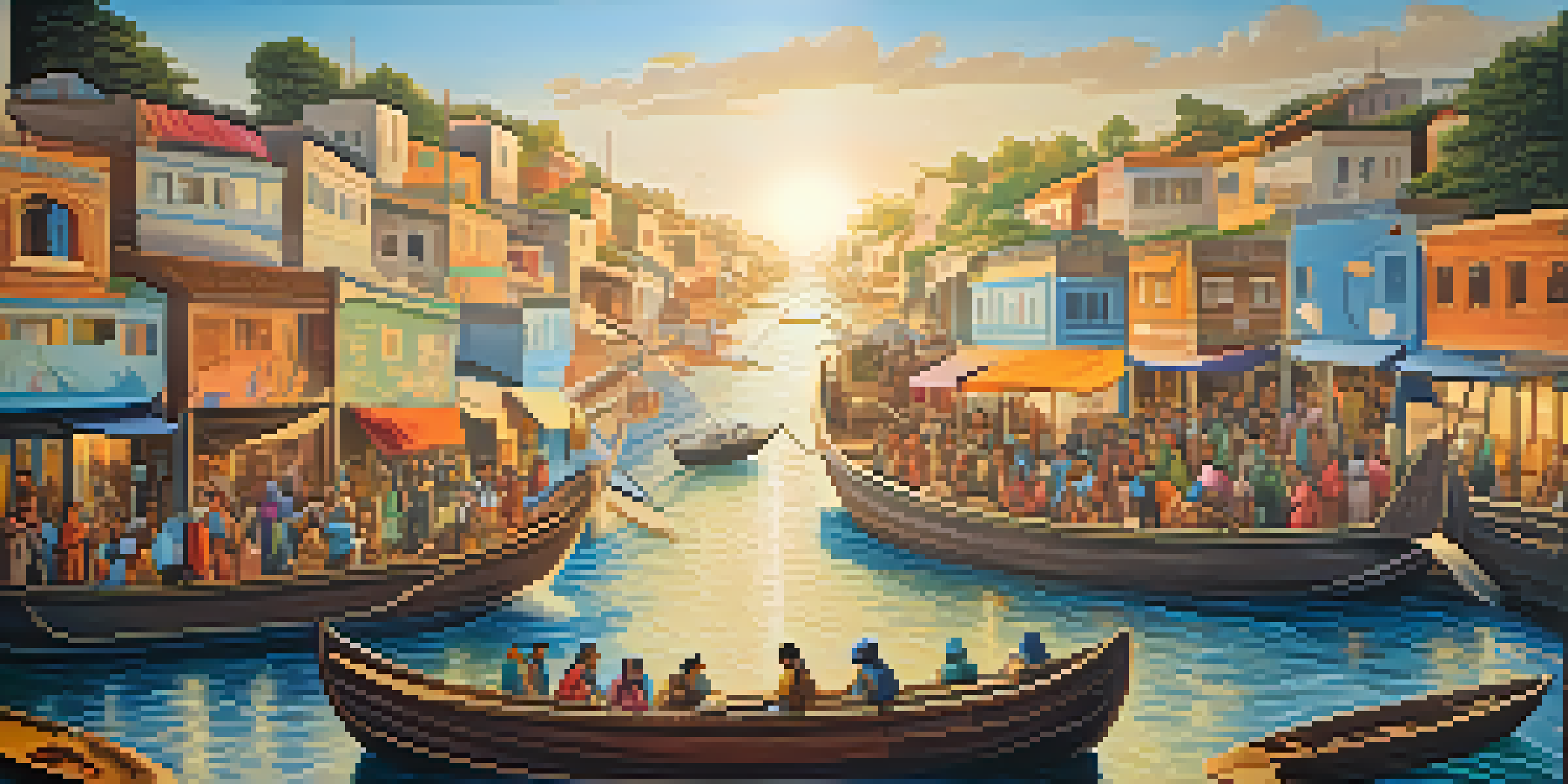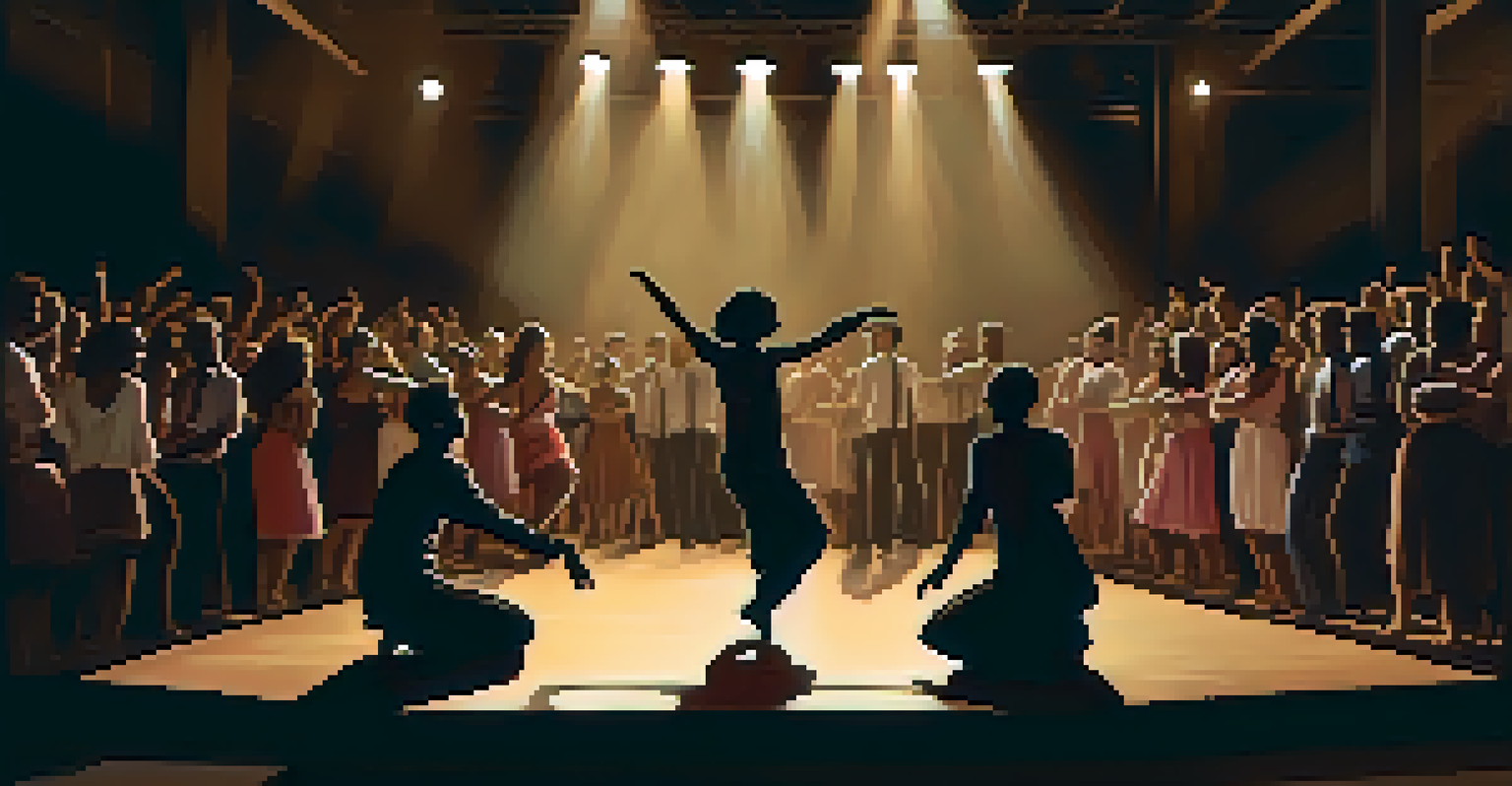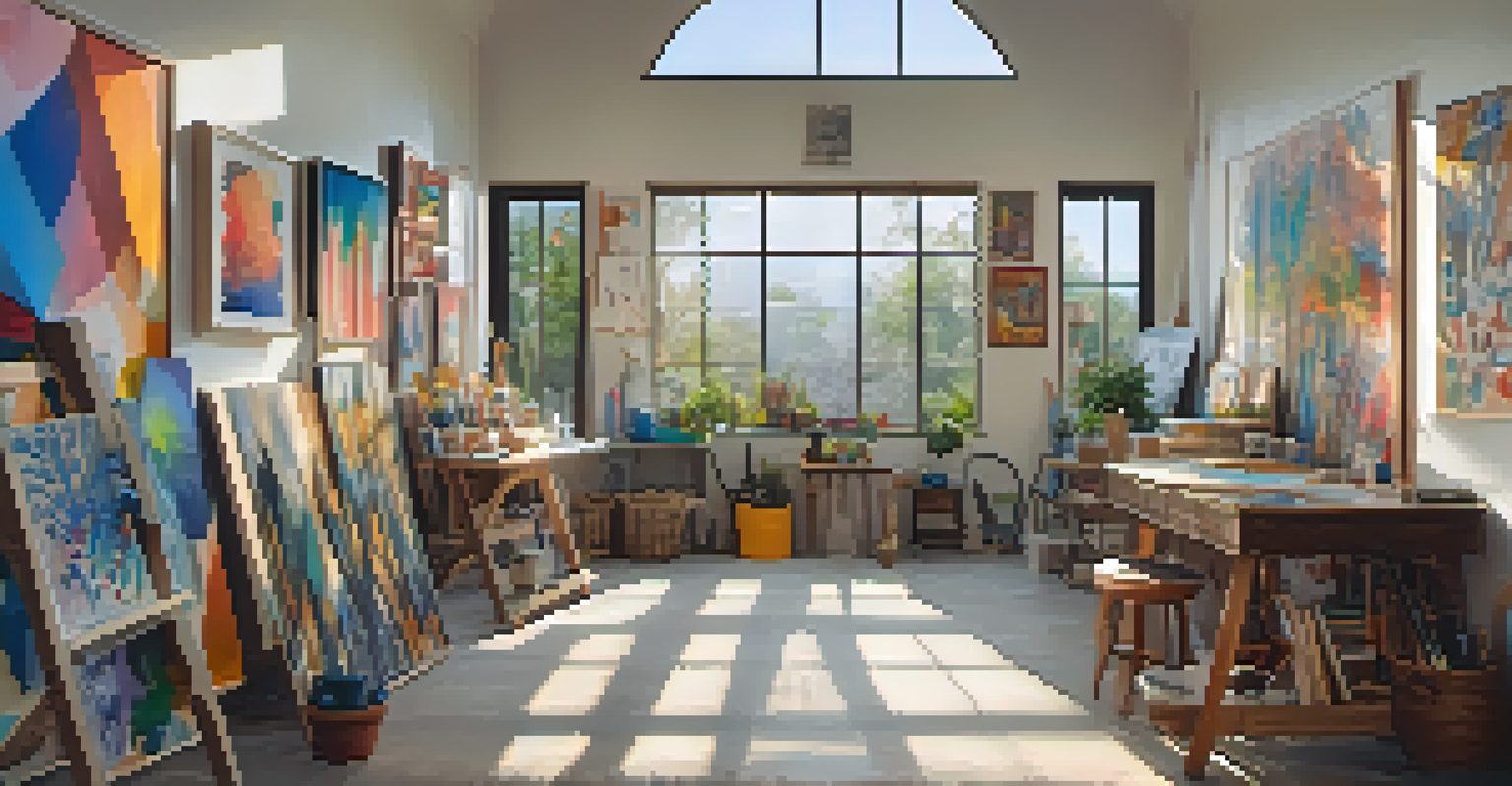Art and the Refugee Experience: Voices from Displaced Artists

Understanding the Refugee Experience Through Art
Art serves as a powerful medium for refugees to express their unique experiences. It provides a voice to those who may feel silenced by their circumstances. Through various forms of art, from painting to performance, displaced individuals can share their stories, emotions, and struggles.
Art is a way of survival. It helps us to understand our experiences and the world around us.
For many artists, the act of creating becomes a form of therapy and a way to process trauma. It allows them to transform pain into something beautiful and meaningful. This creative outlet can also foster a sense of community among refugees, bridging cultural divides through shared experiences.
Moreover, art helps raise awareness about the refugee crisis, inviting audiences to engage with narratives that are often overlooked. By showcasing their work, displaced artists can challenge stereotypes and humanize their struggles, prompting empathy and understanding in viewers.
The Role of Visual Art in Refugee Narratives
Visual art, including painting and sculpture, plays a vital role in narrating the refugee experience. It captures the essence of displacement, loss, and hope through vivid imagery and symbolism. For example, a painting depicting a journey across borders can evoke the emotional weight of that experience.

Many refugee artists use their cultural backgrounds to infuse their artwork with rich narratives. This blend of tradition and contemporary themes not only preserves their heritage but also makes their stories accessible to a wider audience. Each brushstroke or sculpted form can tell a personal tale, creating a dialogue between the artist and the viewer.
Art as a Voice for Refugees
Art empowers refugees to express their experiences, providing a platform to share their stories and emotions.
Exhibitions that feature refugee art can also serve as platforms for education and advocacy. By displaying these works in galleries or public spaces, organizations can highlight the resilience of these artists, encouraging discussions about migration, identity, and human rights.
Storytelling Through Performance Art
Performance art is another compelling way for refugees to share their stories. This dynamic form allows for real-time expression of emotions, often reflecting the immediacy of their experiences. Through dance, theater, or spoken word, artists can convey complex feelings that words alone may not capture.
The only way to heal is to express what we feel. Art allows us to turn our pain into something beautiful.
One powerful aspect of performance art is its ability to engage audiences on a visceral level. When a refugee artist shares their story live, it creates a connection that can be profoundly moving. Audiences are not just passive observers; they become part of the narrative, fostering empathy and understanding.
Furthermore, performance art encourages collaboration among displaced artists, bridging cultural and linguistic barriers. This sense of unity can empower individuals, allowing them to reclaim their identities and share their collective experiences in innovative ways.
Digital Platforms: Amplifying Refugee Voices
In today's digital age, online platforms have become crucial for refugee artists to showcase their work. Social media, blogs, and art-focused websites enable them to reach global audiences, breaking geographical barriers. This widespread access can amplify their voices and stories like never before.
Digital art and multimedia projects have also gained popularity among displaced artists. These formats allow for creative experimentation, merging visuals with sound and interactivity. For instance, a virtual reality experience can transport viewers to a refugee camp, providing a firsthand perspective of life in displacement.
Healing Through Creative Expression
For many displaced artists, creating art serves as a therapeutic process, helping them confront trauma and rebuild their identities.
Additionally, online communities can offer support and solidarity among refugee artists. They can connect with others who share similar experiences, fostering a sense of belonging and collaboration that transcends borders.
Art as a Tool for Healing and Resilience
For many displaced artists, creating art is a means of healing. It allows them to confront their trauma and find solace in the act of creation. Art becomes a refuge, a safe space where they can explore their feelings and express their pain.
The process of making art can also foster resilience, helping individuals rebuild their identities after loss. It empowers them to take control of their narratives, transforming feelings of helplessness into expressions of strength. This reclamation of agency is vital for their emotional and psychological well-being.
Additionally, art can serve as a bridge to recovery for communities affected by conflict and displacement. Collaborative art projects can engage entire groups, promoting healing through shared experiences and collective creativity.
Highlighting the Works of Prominent Refugee Artists
Several refugee artists have gained recognition for their impactful work, bringing attention to the struggles faced by displaced individuals. For instance, the Syrian artist, Yara Said, uses her paintings to depict the stark realities of life in war-torn Syria. Her art resonates with many, serving as both a personal narrative and a broader commentary on conflict.
Another example is the Afghan poet, Khaled Hosseini, whose literary works explore themes of exile and longing. His storytelling captures the emotional landscape of refugees, making the experiences relatable to a wide audience. Through their art, both of these artists provide insights into the human condition amid adversity.
Cultural Exchange Enriches Communities
Collaborations between refugee artists and local communities foster understanding and promote solidarity through shared artistic experiences.
Highlighting such artists not only celebrates their talent but also emphasizes the importance of their stories. Their works can inspire others and motivate a deeper understanding of the refugee experience, paving the way for increased empathy and advocacy.
Fostering Cultural Exchange Through Art
Art can serve as a bridge between cultures, fostering exchange and understanding. When refugee artists collaborate with local communities, they create opportunities for dialogue and connection. This exchange can enrich both parties, allowing for the sharing of diverse perspectives and experiences.
Cultural events, such as art fairs or workshops, can showcase the talents of refugee artists while inviting local participation. These interactions can break down barriers, challenging preconceived notions about refugees and promoting a sense of solidarity. Art becomes a medium for building relationships and celebrating diversity.

Moreover, cultural exchange through art can lead to mutual learning and growth. Local artists can gain inspiration from refugee artists, while displaced individuals can feel valued and recognized within new communities. This reciprocal relationship can foster a more inclusive society.